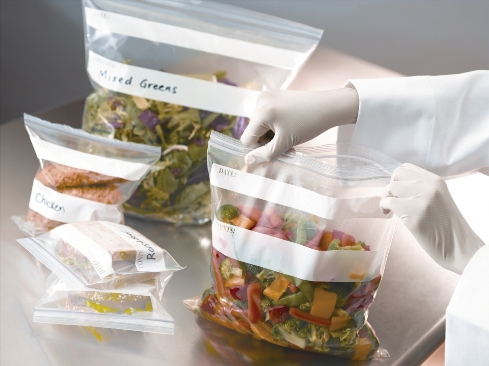Your Guide to Approved Food Safety Training Programs in 2025
Early in my foodservice career, I persuaded the owners of the restaurants I managed to train all our production employees in food safety. Knowing that the cost, both in terms of training materials and employee hours in training would be substantial, I tried to minimize the cost by becoming a certified instructor of the course I wanted to offer and teaching it to our employees myself. Little did I know at the time that my experience doing this would shape my career for the next few decades.
I knew that both our employees and management had areas where we could strengthen our food safety practices. We weren’t doing poorly, but there was room for improvement. Today, research and scientific studies show training alone doesn’t necessarily lead to better on-the-job food safety behavior. However, we also know that knowledge is essential. Before employees can improve their behavior, they must first understand the proper food safety procedures required in our operations. Training isn’t the finish line, it’s the foundation of a strong food safety culture.
Following proper food safety isn’t just a checkbox, it’s a fundamental responsibility for anyone in the foodservice industry. The 2022 FDA Model Food Code, Section 2-102.11, mandates knowledge requirements for the person in charge of food establishments. This requirement can be satisfied through three methods: maintaining a record with no priority violations during inspections, being a certified food protection manager who has passed an accredited program exam, or successfully responding to inspector questions about identified food safety topics.
While you don’t need to have every employee trained in food safety, I’ve always believed in going beyond the minimum. If my business were ever the source of a foodborne illness outbreak, I would want to know that I had done everything in my power to protect my guests. While I am no lawyer, I certainly wouldn’t want my lack of training among employees to be a fact that is ever presented to a jury in a food safety lawsuit. Training the employees who work on the front lines is the very least we can do. After all, it only takes one mistake, one employee, one bad day for a foodborne illness outbreak to occur.
With the proliferation of online training available in all facets of industry, it is important that you select a food safety program that is an approved course. Any program selected should be accredited by the American National Standards Institute National Accreditation Board in partnership with the Conference for Food Protection. This accreditation ensures the certification program meets rigorous national standards for food safety and public health. This accreditation program emerged in 2002 as the only program of its kind in the United States and has received letters of commendation from both the U.S. Department of Health and Human Services and the Centers for Disease Control and Prevention.
……training isn’t the finish line, it’s the foundation of a strong food safety culture……
As of 2025, 12 organizations offer American National Standards Institute-accredited food protection manager certification exams, two more than when I last compiled this list back in 2023. Here are the providers currently available:
- AAA Food Handler (AAA Trainers Inc.)
- Always Food Safe Company
- Certus/StateFoodSafety
- DSBWorldWide, Inc. (EduClasses)
- Learn2Serve (360training.com)
- My Food Service License
- National Registry of Food Safety Professionals (NRFSP)
- National Restaurant Association Solutions (ServSafe)
- Responsible Training (Safeway Certifications, LLC)
- Relish Works, Inc (Trust20)
- Userve
- World Food Safety Organization
Each of these programs is fully accredited and accepted in most jurisdictions that mandate food protection manager certification. However, it’s important that you verify with your local health department that they recognize your chosen certification before making a purchase, as some counties or cities may have specific preferences.
When selecting a food safety training program, there are several factors to consider. First and foremost is the format of the training. Most programs now offer 100% online training and remote-proctored exams, making certification more accessible than ever. Some also provide in-person options through testing centers. Online courses typically allow you to start and stop at your convenience, fitting training around the busy schedule of our employees.
Prices can vary significantly among providers, ranging from approximately $50 to $150 for the complete package (training plus exam). Be aware that some providers advertise low prices but add proctor fees at checkout, or perhaps don’t include proctor fees leaving you to pay additional costs when it comes time to take the exam, while others include all costs upfront. Training-only and exam-only options are also available for those who already have preparation materials or previous training.
It is important to remember that not everyone who completes the training and sits for the exam will pass on the first try. Thus, another pricing consideration is how many times the examinees may retest and how much that retest costs. Some programs allow a second retest for free; some sell different levels of test packages that include a second retest, while others charge for each additional retest.
Consider how individual employees learn best and which language they prefer. Some programs offer extensive video content, while others focus on text-based learning with practice tests. Most provide study guides, glossaries, and full-length practice exams you can take multiple times before your official certification exam. Several of the programs are now offered in multiple languages as well but be sure to investigate this before you make the purchase.
I cannot tell you which program is definitively “the best”, because that depends entirely on how you learn, how you prefer to take the exam, and your budget. What I can tell you is that all ANSI-accredited programs meet the same rigorous standards. Look into each option, compare their offerings, and use your best judgment.
Remember, protecting your guests from foodborne illness isn’t just about compliance, it’s about professional pride and responsibility. Whichever program you choose, you’re taking an important step toward ensuring the safety of everyone who trusts you with their food.
Have you had experiences with any of these training programs and exams that you’d like to share? Drop me a note at foodsafety@foodhandler.com. I’d love to hear about your experiences and may be able to use them in a future blog. Risk Nothing.
READ MORE POSTS
Routes of Foodborne Illness & Germs
From your sniffling coworker to the raw chicken on your kitchen cutting board, everyday life is full of potential infectious hazards. With germs so common and seemingly everywhere, knowing how germs spread is vital to preventing infection and foodborne illness. There are seven possible ways for the transmission of bacteria and viruses to take place. Although some of these microorganisms in our environment are good for us and protect us, disease causing pathogens are the germs or bad guys.
Handling Leafy Green Salad
We have had several produce outbreaks of foodborne disease from our lettuce, spinach, and other greens in the last several years that have been devastating to the produce growers and distributors, retail grocery stores, restaurants, and consumers.
Food Packaging Safety in a Vacuum
Extending the shelf life of fresh foods has come a long way in the food industry since curing meats with salt and sugar or canning vegetables with heat processing. The food service and consumer markets needed some better visual packages to draw the eye to the freshness factor and the technology of food packaging has filled our dinner plate. Vacuum packaging and modified atmosphere packaging, shortened to “MAP”, are the terms used for the method of food packaging used every time we choose convenience over more complex scratch meal preparation. According to industry statistics, billions of packages of vacuum and MAP-packaged foods flood the marketplace today. In both modified-atmosphere and vacuum packaging, food is packaged in a pouch made of barrier film.
The Eleven Commandments of Food Safety at Your Restaurant
Lists help us remember all kinds of information. Given the list of recent national foodborne outbreaks in the news, keep repeating this list to your food service team. They are kind of like “commandments”. As a professional in a food service facility we should think of the very basic food safety concepts that every crew member should aspire to learn, even though this list may have different priorities based on your menu. The first 3 apply to anyone who serves food, from a bag of popcorn to a full course meal. As chefs or managers, if we can “set the example” by repeating good food safety practices visibly to the crew, it will help them understand how important it is to the success of your facility. Thou shalt:










